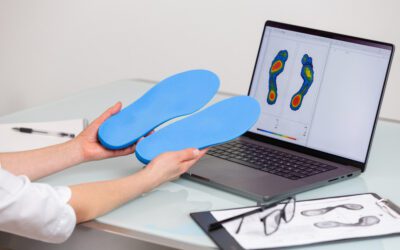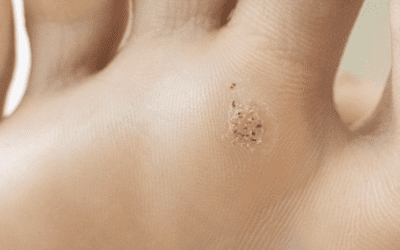One of the most widespread yet often overlooked ailments one might encounter is the hallux abducto valgus, commonly known as a “bunion.” This condition, which may seem trivial at first, is a genuine foot deformity that can significantly affect individuals’ quality of life. But what exactly is hallux abducto valgus?
The term “hallux” refers to the big toe, and “valgus” denotes the deviation of this toe towards the other toes, resulting in a painful protrusion at the metatarsophalangeal joint. This condition might be perceived as a mere cosmetic issue, but it is genuinely a severe disorder that often requires medical intervention to correct the deviation and alleviate associated pain.
Hallux Valgus History
Tracing the exact origins of the recognition of hallux valgus is challenging, but it has been documented in medical writings for centuries. This pathology has been notably exacerbated by wearing improper footwear, especially high heels and narrow shoes that exert constant pressure on the inner edge of the foot, intensifying the deformation.
Anatomically, the foot is a complex structure comprising numerous bones, joints, and ligaments. Hallux abducto valgus specifically affects the metatarsophalangeal joint of the first metatarsal, causing a deviation of the big toe and a progressive foot deformity.
Hallux Valgus Signs and Symptoms
Hallux valgus symptoms are quite distinctive. Primarily, it manifests as localized pain at the bunion site, which can worsen when wearing unsuitable shoes. This pain often coexists with inflammation of the joint, making every step challenging. Hallux valgus causes are numerous, ranging from genetics to environmental factors like regularly wearing unsuitable shoes. In particular, high-heeled shoes and those not adequately supporting the foot joint are common culprits.
- Joint inflammation
- Initial pain and tenderness of the bunion with footwear
- Alteration in the skin over the bunion: it becomes hard, warm and red
- Bony enlargement of the first metatarsal head
- Progression in pain as the bunion size increases
- Gait deviations in the midstance (middle stage) and the propulsion phase (late stance).
- As the bodyweight moves forward on a foot on the ground, the patient will tend to keep their weight on the lateral border of the foot
- Lateral and posterior weight shift
- Late heel rise due to body weight shifted on the lateral border of the foot
- Reduced time in single-limb support
- Foot pronation deformity
- Weakness of hallux abductor muscles
- Shortening of flexor hallucis brevis muscle
Hallux Valgus Prevention
Prevention is crucial in managing hallux valgus. This includes choosing well-fitted shoes that don’t put pressure on the inner edge of the foot. Moreover, regular exercises to strengthen foot muscles can help prevent the deformity’s progression. Home treatment is often the first resort, focusing on pain-relief measures such as using orthotic insoles or gentle massage sessions to ease inflammation. Physiotherapy exercises can also help restore some mobility.
Exercises
In the quest to better manage or even prevent hallux valgus, the role of exercises and physiotherapy cannot be underestimated. Targeted exercises can not only help strengthen foot muscles but also improve toe flexibility, thus preventing increasing stiffness and aggravating toe deviation.
- Toe Stretching: Incorporating regular toe stretches into your daily routine is vital. Simple movements, like gently stretching toes upward and downward, can enhance flexibility.
- Muscle Strengthening: Exercises like picking up an object with your toes can help strengthen foot muscles. It’s also beneficial to work on strengthening the muscles around the first metatarsophalangeal joint.
- Manual Therapy: Physiotherapy can also include manual therapy sessions, where a therapist manipulates the joint in various positions and surrounding structures to enhance mobility and reduce pain.
Podiatrist Treatment of Hallux Valgus
The podiatrist plays a central role in treating hallux valgus. This surgical procedure, often conducted by an orthopedic surgeon, aims to correct the toe’s deviation and restore the foot’s normal function. Depending on the deformity’s severity, various surgical techniques may be employed, ranging from simple hallux valgus corrective surgery to more intricate procedures to realign the foot bones.
Practical Tips and Tricks
Living with hallux valgus can be a daily challenge, but with some practical tips, it’s feasible to manage this condition efficiently.
- Wise Shoe Choices: Opt for shoes providing good support, adequate width, and ample toe space to prevent added pressure on the bunion.
- Rest Periods: If your job requires prolonged standing, ensure you take regular breaks to sit and relieve foot pressure.
- Using Orthopedic Insoles: Orthopedic insoles can provide additional support and alleviate hallux valgus-related pain.
Target Patients
The most affected individuals are those spending long periods standing, especially athletes or people suffering from arthritis. In the sports realm, foot capsulitis can also be a concern, wherein the metatarsal joint undergoes consistent inflammation. Unsuitable shoes can worsen these issues, as can a sedentary lifestyle that doesn’t provide ample opportunities for stretching and strengthening the feet.
Hallux Valgus Surgery
Hallux valgus surgery is generally considered when other treatment methods, such as footwear modifications or orthotics, fail to relieve pain or when the deformity continues to worsen. The surgery aims to correct the angle between the first and second metatarsals, restore the foot’s normal structures, and alleviate pain.
The decision to undergo surgery largely depends on the deformity’s severity, the patient’s age, their overall health, and daily activities. Multiple surgical techniques might be used, with the orthopedic surgeon selecting the most suitable for the patient’s specific situation.
When a patient shows advanced hallux valgus signs, and surgery is considered, they are commonly referred to a surgeon specializing in foot surgery. This expert will evaluate the situation, discussing possible surgical options, associated risks, and expected outcomes.
X-ray Diagnosis
X-ray is an essential tool for accurately diagnosing hallux valgus. It allows visualizing the foot’s bone structure and assessing the deformity’s severity. X-rays are typically taken from various angles to provide a comprehensive view of the condition.
By examining these images, doctors can determine the exact deviation angle of the first metatarsal, crucial for deciding the best therapeutic approach. X-rays also enable the identification of other potential anomalies, such as osteoarthritis of the metatarsophalangeal joint.
Cortisone Injections
For patients with hallux valgus accompanied by severe, painful inflammation, cortisone injections may be a treatment option. Cortisone is a potent anti-inflammatory steroid that can help reduce inflammation and pain in the affected joint.
It’s vital to note that while cortisone injections can offer temporary relief, they don’t address hallux valgus’s underlying cause. Furthermore, there’s a limit to the number of injections a patient can receive, as frequent injections can weaken surrounding tissues. They’re typically considered a palliative measure awaiting surgical intervention or an option for patients unable to undergo surgery.
Hallux valgus treatment requires a multidimensional approach, and each patient should be individually assessed to determine the best therapeutic strategy. While some might benefit from cortisone injections or footwear modifications, others may need surgical intervention to correct the deformity and regain regular foot function. X-ray plays a crucial role in this assessment, providing vital information on the deformity’s exact nature and severity.
In conclusion
It’s essential to understand the importance of prevention in managing hallux valgus.
Adopting suitable footwear and maintaining a healthy lifestyle can go a long way in preventing hallux valgus progression. It’s also crucial to see a podiatrist if symptoms worsen, as timely intervention can prevent future complications.
For those already grappling with this condition, it’s reassuring to know that treatment options exist, ranging from home measures to surgical interventions to correct the hallux valgus foot deformity. Above all, it’s crucial to remember that you’re not alone in this journey, and a path to recovery is possible.
Don’t hesitate to consult your podiatrist to devise a treatment plan suitable for you, and make informed footwear and foot care choices to prevent the progression of hallux valgus bunions.



